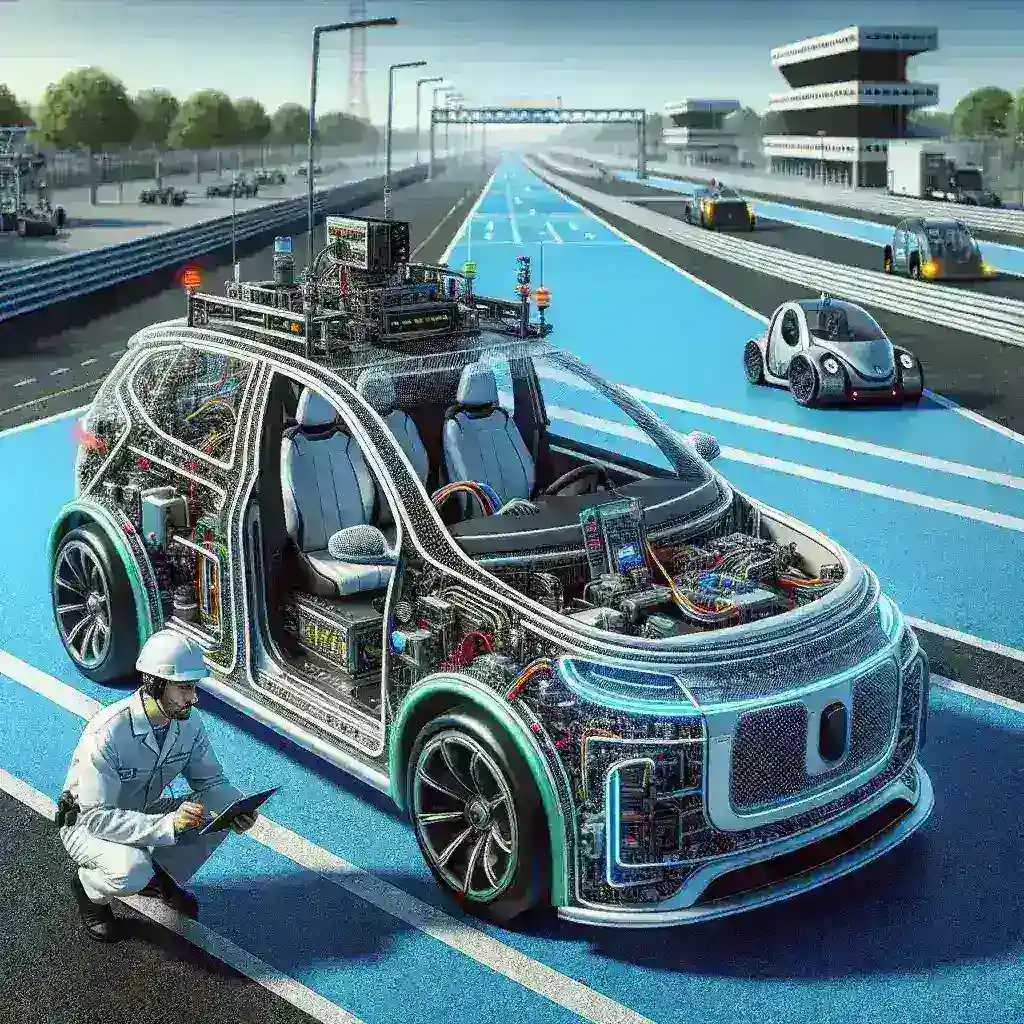Introduction
The automotive industry is undergoing a transformative shift with the rise of automated driving systems. In this dynamic landscape, the collaboration between tech giants like Qualcomm and established automotive leaders such as BMW is shaping the future of mobility. This article delves into the innovative testing of automated driving systems by Qualcomm and BMW in the U.S. automotive tech space, examining its implications, technological advancements, and future directions.
The Collaboration Between Qualcomm and BMW
In recent years, Qualcomm has emerged as a leading player in the automotive tech space, providing advanced processing solutions that power the next generation of vehicles. Their partnership with BMW aims to leverage cutting-edge technology to develop automated driving systems that enhance vehicle safety, efficiency, and user experience.
Key Objectives
- Integrating 5G technology to facilitate real-time vehicle-to-everything (V2X) communication.
- Enhancing safety features through AI-driven systems.
- Improving navigation and traffic management capabilities.
- Creating a seamless user experience through connected services.
Technological Innovations
The joint efforts of Qualcomm and BMW have led to several groundbreaking technological innovations in automated driving systems.
1. Advanced Processing Power
At the heart of the automated driving systems is Qualcomm’s powerful Snapdragon platform, which provides the necessary processing capabilities for real-time data analysis and decision-making. This advanced processing power is crucial for managing the vast amounts of data generated by sensors and cameras in modern vehicles.
2. 5G Connectivity
The integration of 5G technology allows for ultra-reliable and low-latency communication between vehicles and infrastructure. This V2X communication is essential for enhancing situational awareness, enabling vehicles to make informed decisions based on real-time data.
3. AI and Machine Learning
Qualcomm and BMW are utilizing artificial intelligence and machine learning algorithms to improve the performance of automated driving systems. These technologies enable vehicles to learn from their surroundings, adapt to changing environments, and predict potential hazards.
Testing and Validation in the U.S.
The testing and validation of automated driving systems are critical to ensuring their safety and reliability. Qualcomm and BMW have chosen the U.S. automotive tech space for extensive testing due to its diverse driving conditions, regulatory landscape, and technological ecosystem.
1. Diverse Driving Conditions
The U.S. offers a wide range of driving environments, from bustling urban cities to remote rural areas. This diversity allows Qualcomm and BMW to thoroughly test their automated driving systems across various scenarios, ensuring robustness and adaptability.
2. Collaborating with Regulatory Bodies
Working closely with regulatory bodies in the U.S. helps Qualcomm and BMW navigate the complex legal landscape surrounding automated driving technology. This collaboration ensures that their systems comply with safety regulations and can be deployed safely on public roads.
3. Real-World Testing Scenarios
By conducting real-world tests, Qualcomm and BMW can gather valuable data on the performance of their automated driving systems. This data not only informs system improvements but also helps in building trust with consumers and regulatory authorities.
Challenges and Considerations
Despite the promising advancements, the journey towards fully automated driving systems is not without challenges.
1. Safety and Reliability
Ensuring the safety and reliability of automated driving systems is paramount. Qualcomm and BMW must address potential risks, such as system failures or unexpected behavior in complex driving situations.
2. Public Perception and Trust
Building public trust in automated driving technology is essential for widespread adoption. Consumers need to feel confident that these systems are safe and reliable before they embrace them fully.
3. Legal and Ethical Implications
The deployment of automated driving systems raises legal and ethical questions, particularly regarding liability in the event of accidents. Qualcomm and BMW must navigate these complex issues as they progress towards commercialization.
The Future of Automated Driving Systems
The future of automated driving systems is promising, with Qualcomm and BMW at the forefront of innovation. As technology continues to evolve, we can expect significant advancements in the following areas:
1. Enhanced User Experience
Future automated driving systems will prioritize user experience, offering personalized features and seamless connectivity. This may include intuitive interfaces, advanced entertainment options, and tailored driving experiences.
2. Greater Integration with Smart Cities
As cities evolve into smart ecosystems, automated vehicles will play a crucial role in optimizing traffic flow and reducing congestion. Qualcomm and BMW’s collaboration will pave the way for greater integration between vehicles and urban infrastructure.
3. Widespread Adoption
With continued advancements in technology and regulatory support, we can anticipate a gradual shift towards widespread adoption of automated driving systems. This transformation will redefine mobility, making it safer, more efficient, and environmentally friendly.
Conclusion
The partnership between Qualcomm and BMW represents a significant step forward in the development and testing of automated driving systems within the U.S. automotive tech space. Through innovative technologies, rigorous testing, and a commitment to safety, they are poised to lead the charge in shaping the future of mobility. As we stand on the brink of this new era, the implications of their work extend far beyond the automotive industry, influencing how we think about transportation and urban living.

Leave a Reply